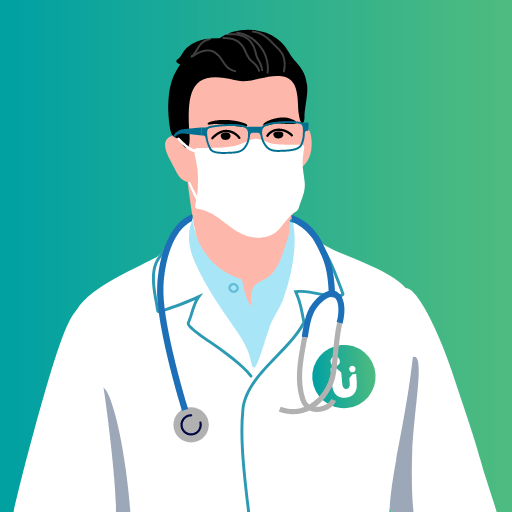As the COVID-19 pandemic continues to spread globally, cases have risen to nearly 12 million in a little over six months since it was first discovered in Wuhan, China. It has also claimed more than 544,000 lives in the process, disrupting daily life in countries all over the world.
One of the key aspects of finding out how a disease is spreading is by tracking transmission patterns in various communities. As per the World Health Organization (WHO), there are four stages of the transmission of a disease to determine how infectious it truly is.
Read more: How does COVID-19 spread
Public health departments and medicine experts describe transmission as the ability of a pathogen like bacteria and viruses to cross from one infected carrier or host to another host. Transmission is said to happen in different ways:
- Vector transmission: Vectors are organisms that a pathogen uses for safe transport. These vectors—for example, mosquitoes and ticks—don't get sick themselves but can transfer the pathogen to humans or other animals through their bite or other means.
- Respiratory droplets: Airborne infections primarily spread through droplet transmission—this occurs when a healthy person inhales the droplets released when an infected person coughs, sneezes, or talks. Transmission can be airborne also when dry or wet particles remain suspended in the air for a long time and a person who breathes them in along with air becomes infected.
- Physical contact: Infections are spread via direct physical contact. Different types of contact are required for different types of transmission—while diseases like conjunctivitis and chickenpox can spread through mere touch, gonorrhoea generally spreads through sexual contact. Here's another example: an Epstein-Barr virus infection known as infectious mononucleosis or the kissing disease spreads through saliva.
- From mother to child: Several infections like HIV, hepatitis B, syphilis and gonorrhoea can be transmitted from the expecting mother to the foetus—doctors can prevent this from happening in many cases through the proper course of medication, if the infection is detected early enough.
- Surface transmission: Touching a contaminated surface and then touching one's eyes, nose or mouth can also infect a person. Commonly touched surfaces like lift buttons and doorknobs are called fomites—they tend to be the worst offenders in terms of enabling surface transmission. (Read more: How to stop touching your face to avoid infection)
- Faecal-oral route: Poor sanitation and hygiene in local communities can also trigger the outbreak of infectious diseases. Eating with unwashed hands or touching contaminated surfaces or drinking contaminated water can all be sources of infection. (Read more: The right way to wash your hands)
- Water and food contamination: Diseases like typhoid, cholera and food poisoning spread through eating or drinking something contaminated with the pathogen that causes these illnesses.
There are four stages of transmission in the case of COVID-19, known as
- Stage 1: Imported cases. When someone travels from a country that has already had an outbreak or history of infection, and brings the infection into another geographical region.
- Stage 2: Local transmission occurs when an infected person spreads the disease to close family and friends. At this stage, local authorities can trace everyone who may have come in contact with the infected person to test them. (Read more: Contact tracing)
- Stage 3: Community transmission occurs when the infection has spread into the local population and it cannot be traced back to the source or the first carrier of the infection. Usually by this stage, state and local authorities impose lockdowns to limit further spread of the disease.
- Stage 4: By this stage, the disease has spread to all parts of a country to be called an epidemic. Infections are steadily rising and fatalities also begin to rise.
Read more: What are the four stages of COVID-19 transmission
According to A Dictionary of Epidemiology, a pandemic is defined as “an epidemic occurring worldwide, or over a very wide area, crossing international boundaries and usually affecting a large number of people”. The WHO declared COVID-19 as a pandemic on 11 March 2020.
There are pandemic-level outbreaks of diseases that continue to affect people around the world every year, irrespective of the part of the world people are living in. This is because even seasonal epidemics like the flu can travel from one country to another, and affect a large number of people. However, the definition of a pandemic doesn't include seasonal epidemic outbreaks.
Read more: Pandemic vs epidemic
The global governing body for health explains that any epidemic that is occurring worldwide simultaneously can be described as a pandemic. This is because it allows epidemiologists around the world to be able to study the rate of transmission and the severity of the disease. A typical influenza outbreak that may occur around the world is a perfect example of a pandemic.
Read more: What makes COVID-19 dangerous
Experts also use different metrics to measure and describe the transmissibility of a disease. Perhaps the most important of these is the reproductive number or R-naught (R0) of the pathogen—which, in the case of COVID-19, is the SARS-CoV-2 virus.
The rate of transmission or R0 is the number of people who get infected by a single patient on average. For example, the R0 of measles is 12-18. This means that each infected person can infect 12-18 healthy people. Compare this with the R0 for the flu, which is much less contagious, at 0.9-2.1.
Similarly, the severity of the disease is calculated by the case fatality ratio, which in the case of influenza outbreaks can range between 0.1% to 0.3%.
In the case of seasonal flu, the fatality rate is at around 0.1%, but because the flu is such a widespread infection caused by viruses that are constantly mutating, it is difficult to ascertain which strain of the virus causes the most widespread infection. About 9% of the world's population gets the flu every year, but the mortality rate remains relatively low because there are vaccines available that are effective in treating the infection. There are up to 5 million deaths annually because of the flu.































